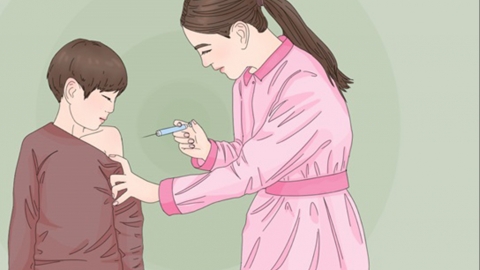What should I do if my arm becomes painful, red, swollen, and develops a hard lump after receiving the A+C meningococcal vaccine?
Pain, redness, swelling, and hard lumps in the arm after receiving the A+C meningococcal vaccine may be caused by local irritation from the vaccine, improper pressing at the injection site, local infection, allergic reaction, or local lymphadenitis. These symptoms can usually be managed with local cold compresses, proper wound care, or medication. If abnormalities occur, timely medical attention is recommended. Specific explanations are as follows:

1. Local irritation from the vaccine: Vaccine components may irritate the tissues at the injection site, causing local inflammation and resulting in pain, redness, swelling, and hard lumps. It is recommended to apply a cold compress with a cold towel within 48 hours after injection to reduce exudation, and switch to warm compresses after 48 hours to promote absorption and relieve discomfort.
2. Improper pressure on the injection site: Insufficient or incorrect pressing after injection may lead to leakage of blood or tissue fluid, causing redness, swelling, hard lumps, and pain. After injection, press the site with a clean cotton swab for 5-10 minutes, and avoid rubbing. Cold compresses can help reduce swelling if symptoms occur.
3. Local infection: Contact of the injection site with contaminants may allow bacterial invasion, causing infection and resulting in local redness, pain, swelling, hard lumps, and possibly fever or pus formation. Treatment may involve using medications such as mupirocin ointment, erythromycin ointment, or cefaclor dry suspension under medical guidance, while maintaining cleanliness and dryness at the affected area.
4. Allergic reaction: Allergy to vaccine components allergy can cause local allergic reactions, such as redness, pain, hard lumps, often accompanied by itching, rash, and in severe cases, systemic allergic symptoms. Doctors generally recommend medications such as loratadine syrup, cetirizine hydrochloride drops, or calamine lotion.
5. Local lymphadenitis: Vaccine stimulation may cause reactive hyperplasia of lymph nodes near the injection site, leading to redness, hard lumps, pain, possible swollen lymph nodes, tenderness, and other symptoms. Treatment should follow medical advice to use medications such as Pudi Lan Xiaoyan oral liquid, cefixime granules, or amoxicillin granules, while avoiding squeezing the affected area.
In daily life, it is important to keep the injection site clean after vaccination, avoid getting it wet or scratching it, and monitor any changes in local symptoms. If redness, swelling, or hard lumps persist for more than three days or symptoms such as fever or pus occur, timely medical attention should be sought.







